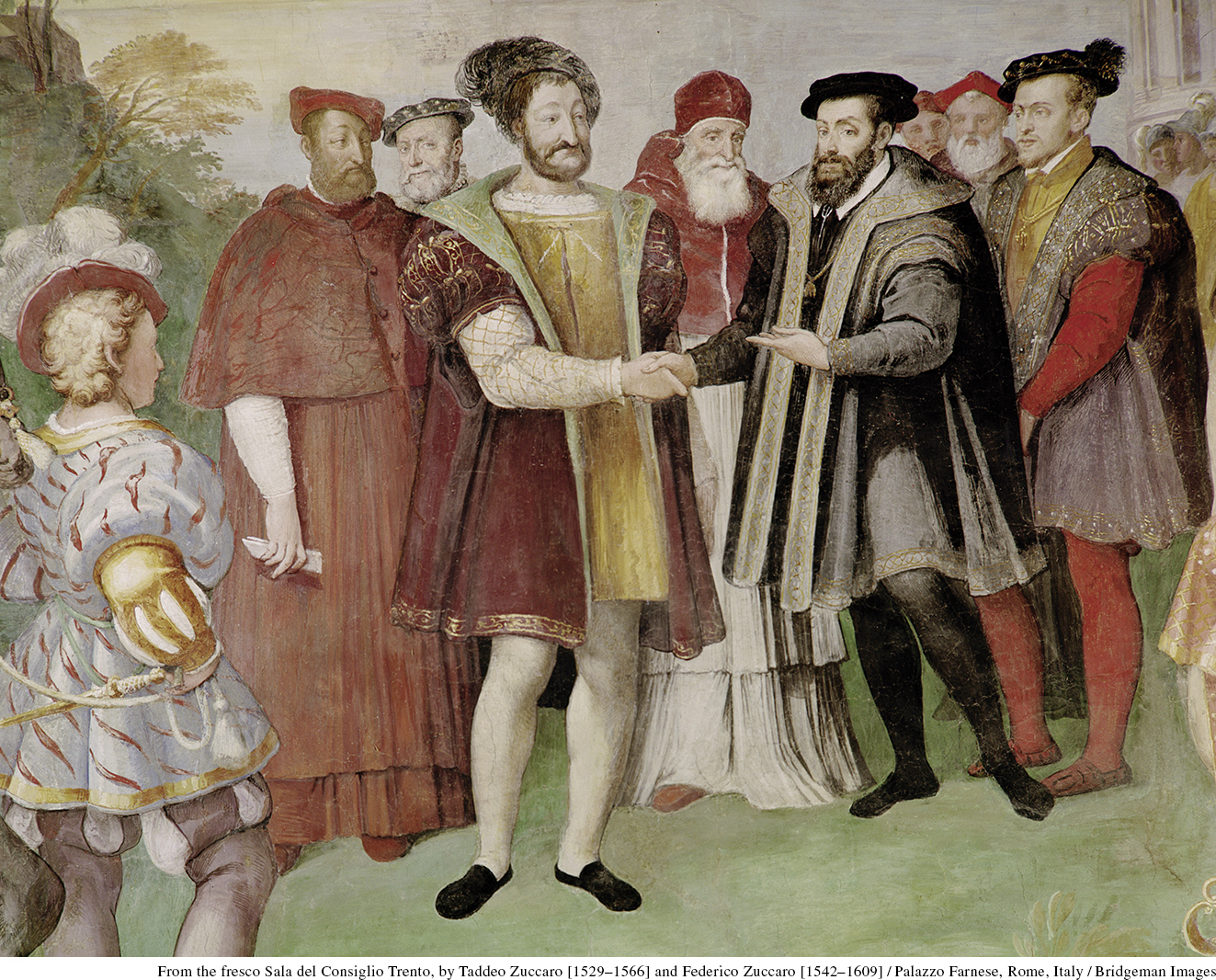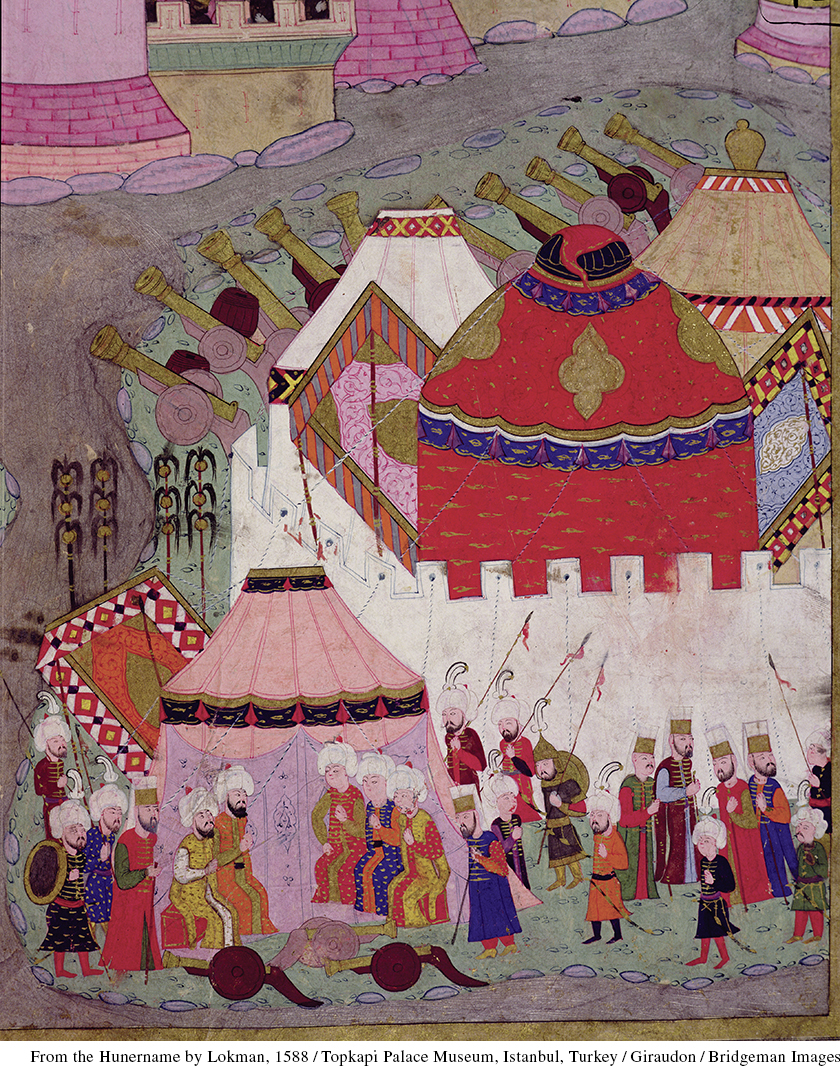Dynastic Wars
Printed Page 463
Important EventsDynastic Wars
Even as the Renaissance developed in the princely courts and the Reformation began in the German states, the Habsburgs (the ruling family in Spain and then the Holy Roman Empire) and the Valois (the ruling family in France) fought each other for domination of Europe. French claims provoked the Italian Wars in 1494, which soon escalated into a general conflict that involved the major Christian monarchs and the Muslim Ottoman sultan as well. From 1494 to 1559, the Valois and Habsburg dynasties, both Catholic, remained implacable enemies. The fighting raged in Italy and the Low Countries. In 1525, the troops of Charles V crushed the French army at Pavia, Italy, counting among their captives the French king himself, Francis I. Forced to renounce all claims to Italian territory to gain his freedom, Francis furiously repudiated the treaty the moment he reached France, reigniting the conflict.

In 1527, Charles’s troops captured and sacked Rome because the pope had allied with the French. Many of the imperial troops were German Protestant mercenaries, who pillaged Catholic churches and brutalized the Catholic clergy. Protestants and Catholics alike interpreted the sack of Rome by imperial forces as a punishment of God; even the Catholic church read it as a sign that reform was necessary. Finally, in 1559, the French gave up their claims in Italy and signed the Treaty of Cateau-Cambrésis, ending the conflict. To seal the peace the French king Henry II married his sister to the duke of Savoy, an ally of the Habsburgs, and his daughter to the Habsburg king of Spain, Philip II, who had succeeded his father Charles V in 1556.

The dynastic struggle (Valois versus Habsburg) had drawn in many other belligerents, who fought on one side or the other for their own benefit. Some acted purely out of power considerations, such as England, first siding with the Valois and then with the Habsburgs. Others fought for their independence, such as the papacy and the Italian states, which did not want any one power to dominate Italy. Still others chose sides for religious reasons, such as the Protestant princes in Germany, who exploited the Valois-Habsburg conflict to extract religious concessions from the emperor in 1555. The Ottoman Turks saw in this fight an opportunity to expand their territory.
The Ottoman Empire reached its height of power under Sultan Suleiman I, known as Suleiman the Magnificent (r. 1520–1566). In 1526, a Turkish expedition destroyed the Hungarian army at Mohács. Three years later, the Ottomans laid siege to Vienna; though unsuccessful, the attack sent shock waves throughout Christian Europe. In 1535, Charles V led a campaign to capture Tunis, the lair of North African pirates loyal to the Ottomans. Desperate to overcome Charles’s superior Habsburg forces, the French king Francis I forged an alliance with the Turkish sultan. The Turkish fleet besieged the Habsburg troops holding Nice, on the southern coast of France. Francis even ordered all inhabitants of nearby Toulon to vacate the town so that he could turn it into a Muslim colony for eight months, complete with a mosque and a slave market.
The French alliance with the Turks reflected the spirit of the times: the age-old idea of the Christian crusade against Islam now had to compete with a new political strategy that considered religion only one factor among many in power politics. Religion could be sacrificed, if need be, on the altar of state building. Constantly distracted by the challenges of the Ottomans to the east and the German Protestants at home, Charles V could not crush the French with one swift blow.